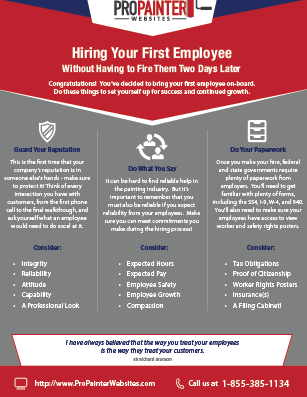Discover Just How Seasonal Influences Can Affect The Efficiency Of Industrial Outside Painting And Figure Out One Of The Most Beneficial Times To Make Certain Durable Outcomes For Your Task
Discover Just How Seasonal Influences Can Affect The Efficiency Of Industrial Outside Painting And Figure Out One Of The Most Beneficial Times To Make Certain Durable Outcomes For Your Task
Blog Article
Short Article Developed By-Leach Decker
When you're planning a business outside painting task, seasonal factors can make or break your results. You'll want to think about just how temperature and moisture effect paint application and drying out times. Picking straightline.com can guarantee your paint sticks appropriately and lasts much longer. Yet which periods are truly the very best for this kind of job? Let's explore the crucial elements that can affect your job's success.
The Effect of Temperature Level on Paint Application
When you're preparing a business external paint job, the temperature level can considerably impact how well the paint sticks and dries out.
Preferably, you wish to paint when temperature levels vary between 50 ° F and 85 ° F. If it's too chilly, the paint might not heal appropriately, causing problems like peeling or cracking.
On the other hand, if it's too warm, the paint can dry out also promptly, preventing correct attachment and resulting in an uneven coating.
You must likewise consider the time of day; morning or late afternoon offers cooler temperature levels, which can be a lot more positive.
Always inspect the manufacturer's referrals for the particular paint you're making use of, as they typically supply assistance on the ideal temperature level range for ideal outcomes.
Moisture and Its Result on Drying Times
Temperature level isn't the only ecological factor that affects your commercial exterior paint job; humidity plays a significant role also. High moisture levels can decrease drying times substantially, impacting the overall high quality of your paint work.
When the air is filled with dampness, the paint takes longer to cure, which can lead to problems like inadequate bond and a greater danger of mold growth. If you're repainting on a specifically damp day, be planned for extensive wait times in between coats.
It's important to keep track of regional weather and plan as necessary. Preferably, click over here for moisture levels between 40% and 70% for optimal drying.
Maintaining these factors in mind guarantees your task stays on track and delivers an enduring surface.
Best Seasons for Commercial Exterior Painting Projects
What's the very best season for your industrial external painting jobs?
Springtime and early fall are commonly your best bets. During these seasons, temperatures are light, and moisture degrees are commonly reduced, creating ideal conditions for paint application and drying.
Avoid summer season's intense heat, which can create paint to dry too quickly, resulting in inadequate adhesion and finish. Likewise, wintertime's cool temperature levels can prevent appropriate drying and curing, running the risk of the durability of your paint task.
Aim for days with temperatures between 50 ° F and 85 ° F for ideal results. Bear in mind to inspect the regional weather prediction for rainfall, as wet conditions can spoil your task.
Planning around these aspects ensures your painting job runs efficiently and lasts much longer.
Conclusion
Finally, intending your business external painting jobs around seasonal factors to consider can make a significant difference in the result. By scheduling work throughout the excellent temperature levels and humidity degrees, you'll make sure far better adhesion and drying times. Remember to watch on regional weather forecasts and choose the right time of year-- spring and very early fall are your best bets. Taking these actions will assist you achieve a durable and specialist surface that lasts.
